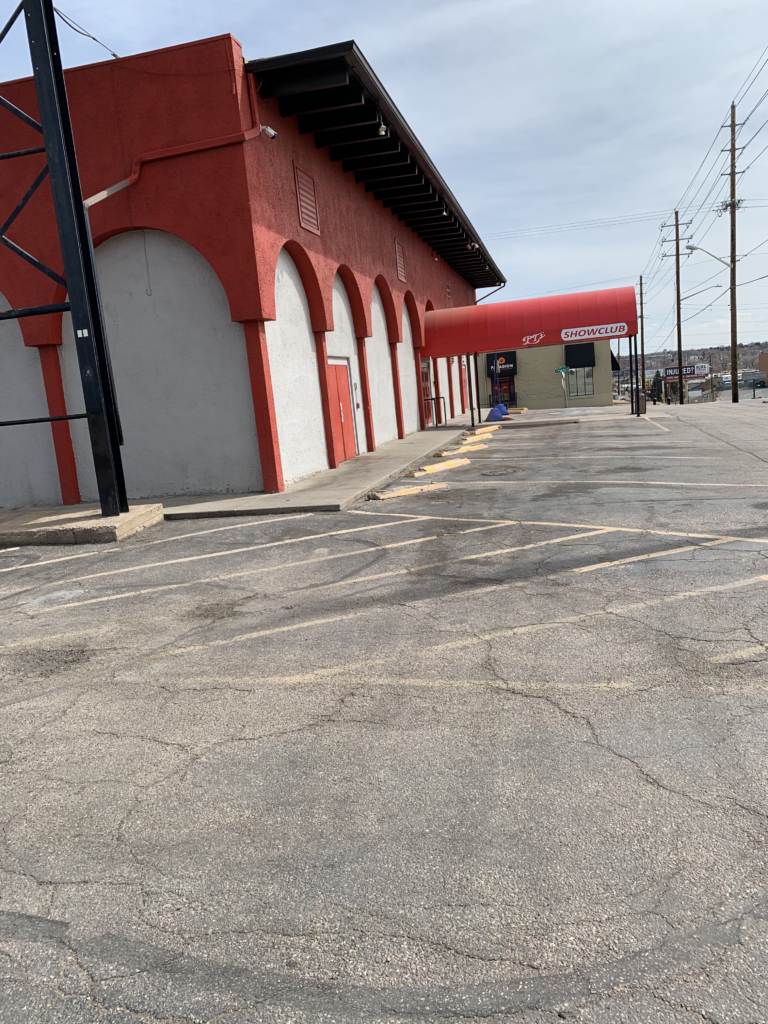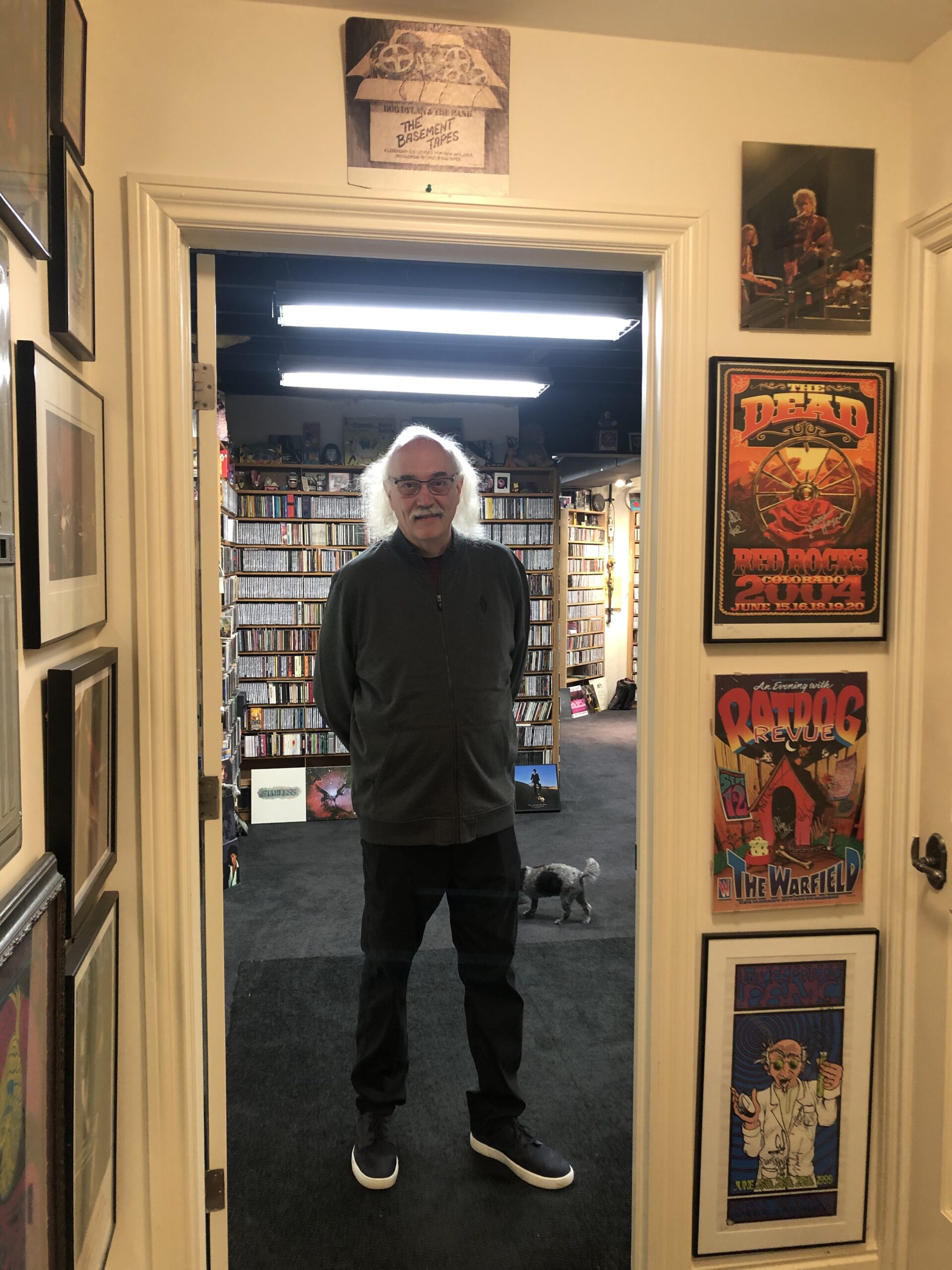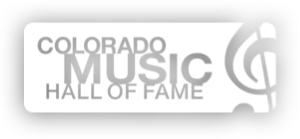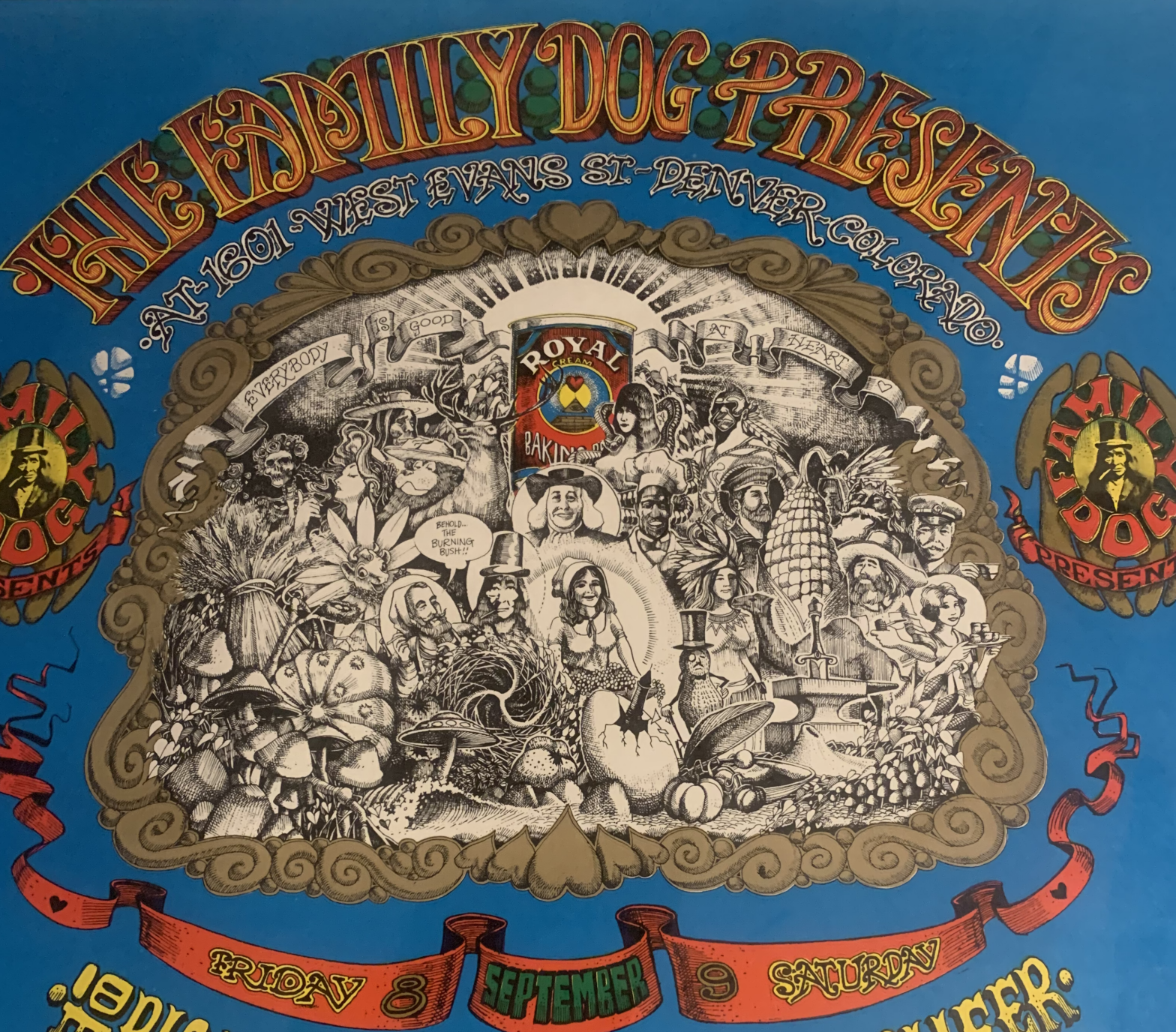Any discussion of the music history of Colorado or the development of Denver as a cultural hub must invariably lead back to The Family Dog concert venue. In 1967, Colorado music promoting legend and Hall of Famer Barry Fey and his (former) wife Cynthia decided there should be a club in Denver that participated in the nascent “ballroom” music scene. The scene had been gaining traction on both coasts, especially in San Francisco, where hippie promoters Chet Helms and his partner Bob Cohen) were making waves with their communal organization called Family Dog Productions. Helms was mixing the best bands of the day with psychedelic light shows and having extraordinary results–at least artistically (The Family Dog was never really a profitable entity). The Feys went to San Francisco to discuss the possibility of opening a venue in Denver similar to Helms’ Avalon Ballroom.
Amazingly, they left with a partnership to open a hip spot for psychedelic concert happenings in Denver. On September 8 and 9th in 1967, Big Brother & The Holding Company (with Janis Joplin), Blue Cheer and Colorado band Eighth Penny Matter opened the venue, which closed only 10 months later. Promising great things on the horizon, the poster for the grand-opening concert is a classic Rick Griffin design with so many fantastic design elements, and really portends to the exciting, optimistic adventure the venue and society was heading towards.
But, almost immediately, Denver police made the venue the subject of intense scrutiny with an eye towards stamping out the youth movement bubbling up worldwide. Colorado was still a pretty conservative place when I moved here in 1968, and the powers that be were wary of radical behavior popping up in their usually quiet city. The details of this conflict as well as so much more about The Family Dog can be seen in the important documentary Tale Of The Dog. Released in 2020 by Colorado filmmakers Dan Obarski and Scott Montgomery, this film is an important reference for Colorado music and should be sought out by all serious students of the scene (currently available on both Apple TV and Amazon Prime).
There are a number of factors about The Family Dog story that draw my attention besides the obvious musical connections. There is the confounding lack of evidence to be found about the venue. There is the legacy of the posters, the ongoing impact of the venue and its place at the crossroads of Colorado history.
I drove over to 1601 West Evans yesterday, as I have many times over the years in an effort to glean something (photos are of the current building). Denver county line ends on just the other side of Evans, so this really is and was the outskirts of town. Both property costs and the ability to stay under the radar must have been factors in Barry Fey’s decision-making when he signed the lease. It’s hard to get the vibe at all these days. The building has been a strip club for a long time. It’s also hard to find info on the building before it became The Family Dog, but it was owned by a lawyer named Francis Salazar. He would end up being involved in the legal turmoil of the venue as it unfolded. There is a suggestion that it was a strip club before it became The Family Dog, but I am unable to confirm this.


After The Family Dog closed, it became Francis Salazar’s law office, before becoming PT’s Gentleman’s Club which it remains to this day. The neighborhood has always been a mix of light industrial and mid- to low-income housing, and nothing has changed. It truly is one of the +few stretches of Denver that looks essentially like it did in 1967, and from the outside, other than the newfangled electronic signage, the building is remarkably unchanged. As I walked around the building I was struck by how large the parking lot was. It seemed like back in the unregulated days, the grounds of the building could accommodate maybe 50 cars. There was also ample neighborhood parking. As I stood by the side-doors I pondered a young Jim Morrison or Grace Slick standing there nervously catching a breath before going on stage to a crowd of young Coloradans.
What the scene around the venue was like back in 1968 is just hard to imagine. I’ve spoken to many people who were, or claim to have been, at some or all of the shows at The Family Dog, and the lack of detail they can recall is breathtaking. There is a hackneyed trope about ‘if you remember the 60s, you weren’t really there’ which I have always dismissed. Because I did live through it, and I remember with technicolor clarity the events I witnessed. However, I can find almost nobody with specific details about the bands that played, what the sets were or what the light show experience (provided by Diogenes Lantern Works) was like. The dance floor was psychedelically-painted and coated with clear plastic, and yet there are no pictures showing the full color and glory of it
– Paul Epstein, Co-Chair, Colorado Music Hall of Fame; founder/former owner of Twist & Shout; music historian and archivist

“I moved to Colorado in 1968 and started going to concerts almost immediately. I eagerly grabbed posters, flyers, ticket stubs, advertisements, concert recordings, pretty much any proof I could find that the event happened. In 1988, I started a record store called Twist & Shout, and my collecting of memorabilia went into even higher gear. Over the next 34 years, I had rare access to memorabilia of all types and sizes. Now that I’ve retired, the time seems right to start sharing these things, and the stories that go with them. So, every other Tuesday, I will ask you to Let Me Take You Down (to the basement) to check out some of the good stuff!” – Paul Epstein

